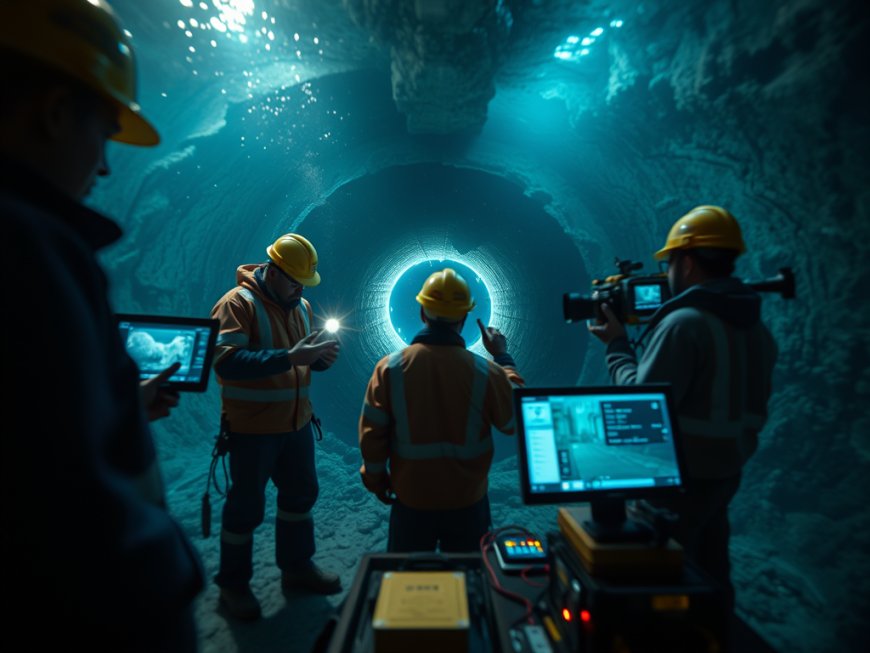Tunnel Between Morocco and Spain: Final Route and Seismic Tests Underway
The Morocco-Spain tunnel project, a pivotal infrastructure initiative connecting Africa and Europe, has commenced its execution phase. Governments are focusing on seismic research and constructing an experimental tunnel to navigate geological challenges. With an estimated cost of €10 billion, international backing is crucial for overcoming technical and diplomatic obstacles.

Introduction
In a significant development, the ambitious project to build a tunnel connecting Morocco and Spain under the Strait of Gibraltar has entered its execution phase. Despite being one of the most daunting engineering challenges in modern history, the governments of both countries are resolute in their determination to see this project through to completion.
Technical Studies and Current Advances
The Spanish government has recently initiated a crucial step by procuring four seafloor seismometers valued at €487,872. These instruments, developed by the Geophysics section of the Royal Observatory of the Navy (ROA) in Spain, will be used for a sismotectonic research campaign. This campaign, scheduled to last six months, aims to study the seafloor of the Strait of Gibraltar and will be conducted by the SECEGSA (Société espagnole d’études pour la communication fixe à travers le détroit de Gibraltar) in collaboration with the Royal Observatory and the Navy's Observatory in San Fernando, near Cadiz[3].
Experimental Tunnel
To better understand the technical and geological challenges, particularly those related to tectonic constraints in the region, an experimental underwater tunnel will be dug. This phase is essential for determining the optimal route for the final 27 to 30 kilometers long tunnel[1].
Data Analysis
Comprehensive digitization of existing data is ongoing, including updating databases and integrating modern information systems for optimal management of geological, hydraulic, and environmental information[1].
Bilateral Cooperation and Project Management
Strengthened Collaboration
In April 2023, a new cooperation agreement was signed with the Centre d’Études des Transports pour la Méditerranée Occidentale (CETMO) to harmonize efforts and meet international standards. This partnership aims to manage technical challenges effectively[1].
Organizational Modernization
Both the Moroccan (SNED) and Spanish (SECEGSA) entities responsible for the project are working on refactoring their organizational systems. This includes updating regulations, creating a joint technological complex, and developing a procedures manual for better coordination[1].
Project Scope and Ambitions
Strategic Link
The tunnel is envisioned as a strategic link between Africa and Europe, set to transform economic and human exchanges in the region. It symbolizes a shared commitment by Morocco and Spain to strengthen their relations while tackling significant technological challenges[1].
Key Statistics
- Length: Approximately 38.5 kilometers, with 28 kilometers under the sea[4].
- Capacity: Estimated annual transit of 12.8 million passengers and 13 million tons of goods[3][4].
- Structure: Two single-track tunnels with a diameter of 7.9 meters, accompanied by a 6-meter service gallery. Transverse passages every 340 meters will connect these structures[3].
Economic and Social Impact
The construction of this tunnel is expected to significantly reduce transportation and logistics costs, enhance commercial exchanges, and consolidate relationships between Europe and Africa. The project is anticipated to be operational before the 2030 World Cup, which Spain, Portugal, and Morocco will co-host[4].
Financial and International Support
Budget
The estimated cost of the project is around €10 billion, with contributions expected from European and African financial institutions. The Spanish government has allocated an initial budget of €750,000 for feasibility studies[2][4].
International Backing
The project enjoys support from several international actors, including the European Union, the UK, the US, China, Japan, the UAE, and Saudi Arabia. Financial institutions such as the World Bank, the African Development Bank, and the Islamic Development Bank have also expressed their support[4].
Challenges and Future Outlook
Technical Challenges
The project faces significant technical hurdles, including the need for detailed seismic research to evaluate geological risks and finalize the tunnel design. The upcoming sismotectonic research campaign is crucial for ensuring the project's viability and safety[3].
Diplomatic and Financial Hurdles
Historical diplomatic tensions between Spain and Morocco, particularly over the Western Sahara issue, have been a major obstacle. However, recent improvements in diplomatic relations have revived the project's momentum. The new diplomatic framework established in spring 2023 has reinvigorated the idea of the tunnel[5].
Conclusion
The Morocco-Spain tunnel project is a monumental undertaking that promises to redefine connectivity between Africa and Europe. With methodical approaches, coordinated efforts, and significant international support, this project is on track to become a reality. As the project progresses, it will undoubtedly mark a significant turning point in the economic and social development of the Western Mediterranean region.
Table: Key Project Details
Category
Details
Length
Approximately 38.5 kilometers, with 28 kilometers under the sea
Capacity
12.8 million passengers and 13 million tons of goods annually
Structure
Two single-track tunnels (7.9 meters in diameter) and a 6-meter service gallery
Transverse Passages
Every 340 meters
Cost
Estimated €10 billion
Financial Support
European and African financial institutions, World Bank, African Development Bank, Islamic Development Bank
International Support
European Union, UK, US, China, Japan, UAE, Saudi Arabia
Operational Timeline
Expected to be operational before the 2030 World Cup
Diplomatic Framework
Improved relations between Spain and Morocco, new diplomatic framework established in spring 2023
List: Project Phases and Milestones
- Experimental Tunnel: Creusement of an experimental underwater tunnel to understand technical and geological challenges.
- Data Analysis: Comprehensive digitization of existing data and integration of modern information systems.
- Sismotectonic Research: Upcoming campaign using seafloor seismometers to evaluate geological risks.
- Feasibility Studies: Ongoing studies to determine the optimal route and finalize the tunnel design.
- Bilateral Cooperation: Strengthened collaboration between Morocco and Spain through agreements and joint organizational efforts.
- Financial Planning: Allocation of initial budget and securing international financial support.
- Construction Phase: Expected to commence by 2030, with the project aiming to be operational before the 2030 World Cup.
- Operational Phase: The tunnel is anticipated to significantly reduce transportation costs and enhance economic exchanges between Europe and Africa.

